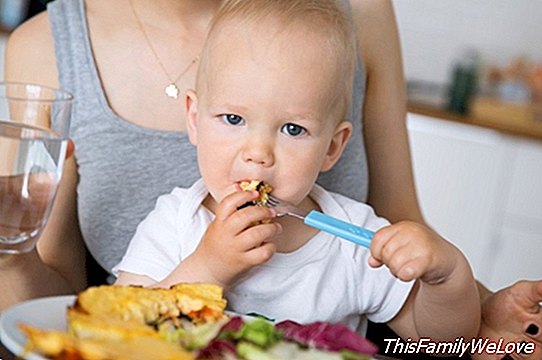Supplementary feeding: 7 tips to introduce food

Although you can set some general guidelines for the feeding of babies, the field of nutrition has a lot of tradition. After all, not all the countries of the world have the same food availability and the consumption habits of one and the other are usually different.
There is a tendency to think that if a certain food is not included in a child's menu in time, it can develop an intolerance to that food in the long run. However, there is no clear relationship between the time of introducing a food and the risk of developing an allergy or intolerance.
The introduction of new foods in the baby's diet should be done in a well-ordered and better way individually to know if they feel good or allergic. As for the flavors, in order to get used to them easily, it is convenient to consider that the child's neurological development is stimulated during the window period that lasts a few months. During this period, the child changes his swallowing mechanism, so that he no longer just sucks but learns to chew and stays seated with his neck upright.
The recommended daily caloric intake for a baby is between 80 and 100 kilocalories per kilo of weight. Thus, as a general rule, a child weighing eight kilos should consume between 600 and 800 kilocalories a day.
Advice regarding complementary feeding
The introduction of the vegetable and fruit to the baby is a test of fire for both the baby and the parents. The most important thing in this stage is patience. Each child has their own times. It is essential not to force the baby, and encourage him to try and experiment with the food. This phase is an important stage in the growth and development of the baby and only success based on training is achieved.
In addition there are other guidelines that you must take into account:
1. Do not add salt. The food itself already provides the necessary salt.
2. Purees should not be stored from one day to the next. The vitamins in food are thermolabile, that is, they are altered and destroyed with changes in temperature. So, the best purees of the day.
3. Do not offer meat, fish or eggs on the same day since it would exceed the recommended amount of protein. Choose one every day.
4. Best raw fruit and ripe than cooked.
5. Avoid dark green leafy vegetables like spinach and chard until after the year of life. These vegetables contain excess nitrates that in large quantities can cause problems in the distribution of oxygen in the baby's body (technically called methemoglobinemia).
6. If the child repeatedly refuses a food, change to another of the same group after a few days. It is better to stop a few days and return to breastfeeding or artificial and start again after a few days, so that the baby does not associate the food with an unpleasant moment.
7. Let the child play with the spoon so you can become familiar with the new tools.
Dr. Paloma Nacher. Neonatologist Hospital La Milagrosa, Madrid



